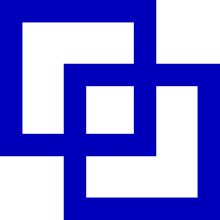Square dance
Square dance is a folk dance that originated in the USA . The various dance figures used in square dance are based on traditional folk dances of the various peoples who immigrated to the United States. Some of these dances are Morris Dance , English Country Dance, and the Quadrille . Square dance is danced all over the world; he came to Germany through the American occupation after the Second World War .
Square dance is danced in groups of four pairs each, which start on the four sides of a square (English square ). The sequence of figures is indicated by announcements (calls) by a caller in spoken or sung form. These calls are standardized worldwide - so a dancer from Germany can dance with dancers from other countries at any time without difficulty.
Different types of square dance
There are two different types of square dance:
- Western Square Dance also known as "Modern Western Square Dance" or "Modern American Square Dance". This modern form of square dance is danced around the world and is also the official folk dance of most of the US states.
While there are fixed choreographies in traditional square dance, the sequence of the figures in modern square dance is more or less spontaneous, only the caller knows which figure will be danced next. Depending on the choreographic technique, prepared combinations of figures are used or a spontaneous decision is made as to which figure has the desired effect.
The music of the two forms is also different. In traditional square dance the music is traditional country dance music: mostly Irish and Scottish jigs and reels as well as folk music from Québec or Cape Breton ( Canada ), England, Scotland and other countries. The music is almost always played by a traditional dance music band. In Western Square Dance the music is a mixture of many types of music, from pop to traditional and modern country music, musical music , hits , etc. The music is rarely played by a band, but is recorded and the caller calls it live.
Traditional and modern western square dance have a number of calls in common, but there are small differences in execution:
- Example: The Allemande Left is traditionally performed by shaking the left hand with another dancer, leaning back slightly and walking around the central point of the hands together. In Western Square Dance, the grip is changed so that the left forearm of the other dancer is grabbed and not leaned back. This change makes it easier to dance the figure and include it in a long sequence of calls.
distribution
The traditional square dance is only danced sporadically today. Modern American square dance, on the other hand, has experienced a real boom since the 1990s. In addition to the USA and Canada, where the dance had its roots and was therefore traditionally very strongly represented, it also spread strongly in some non-American countries. In Europe these are in particular Sweden, Denmark, England, Germany and the Czech Republic. Outside of Europe, Australia and Japan should be mentioned.
Related dance styles
- Round Dance is an American form of ballroom dancing , which also uses the figures to be announced; the announcer is referred to here as a cuer . It is danced in pairs on a large circular path. Figures and rhythms are known from waltzes , rumba , paso doble , etc.
- Clogging is a variation on tap dance . It is danced individually or in formations.
- Contra dance is similar to traditional square dance; however, the dance couples do not form a square, but two long rows with more than four couples facing each other. The announcer is called the prompter here .
- Line dance is danced by individuals who all have the same line of sight. The limitation to country music is typical here.
Square dancers often do round dance, clogging or contra dance. Square and round dance tips are often offered alternately at square dance events, known as specials . At even larger events such as festivals and jamborees, square dance, round dance and clogging and sometimes also contra dance are offered in parallel.
Web links
- Callerlab - American umbrella organization for callers, standardizing dance programs (in English)
- Dosado.com - Further information on Square Dance (in English)
- EAASDC - The website of the European Association of American Square Dance Clubs


